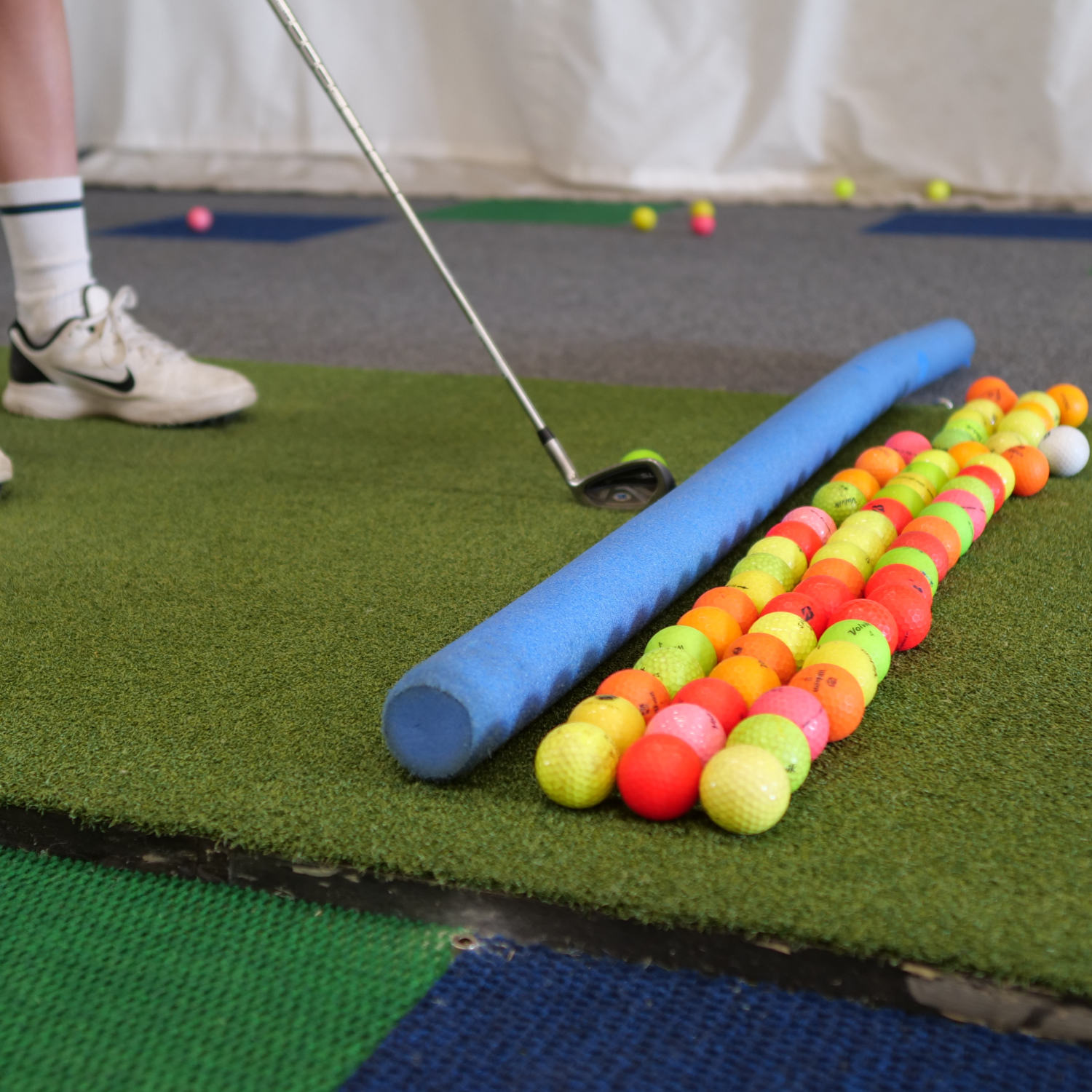I practice for fun
By Cameron Van Rooyen
In the last segment, I highlighted a few points on the differences between training and practicing. What I find stops most club golfers from playing consistently, is not their talent or capability, but rather their inability to practice properly. So, in this instalment – to stay in the holiday spirit – I thought I’d share my practice routine with you and why I do what I do, out on the range. Well, to be honest, it’s the practice routine I’d like to follow, but as my dad always said “ Do as I say, not as I do”, so here goes…
The first routine is based on the current time I have available. Most of us are typically restricted by our jobs, our families, the weather, the pandemic etc. This obviously leaves us less time to be outside playing golf. This first routine, however, might just shed some light on how easy it is to practice effectively and how to truly make use of that hour practice session you get in once a week. The second, will be a routine that has no time restrictions and can be mirrored to some elite players typical days. It’s something we all wish for, just a little more time to practice, yes? But as you’ll see by the end, it is more a matter of quality practice rather than quantity. This is the secret.

Practice 1
Let’s assume that our focus area for today is mid irons (5 – 7 iron) 1 – 2 hours ( 4 times a week )
Warm-up – 15
Mins This includes:
- ▪ Hitting pitch shots
- ▪ Active stretching (https://juniorgolfersa.co.za/ground-up-warm-up-stretch-down/)
- ▪ Full wedges
- ▪ Full mid iron swing
This would probably be the base for every session I do. I feel that starting with a short, more controllable club not only builds confidence and ‘feel’ but beginning with small movements and progressively becoming larger and faster allows the body to activate properly. Activation is what we’re looking for not being ‘ loose’.

Drills – 20 – 25 mins ( 30 balls MAX )
This can include doing mirror drills. So important for linking the real to the feel. This is also the bulk of my practice today. Here, I am working on my takeaway for instance. I’ve been given a drill to do by my coach or have possibly found an alternative from YouTube or Instagram. The focus is not the drill I’m doing, it’s my method. The reason I’m only using 30 golf balls in this section, is to first make my practice sessions measurable, and secondly to make them effective. I can’t be standing out on the range with a billion thoughts going through my mind expecting my swing to become better. This will take millions of hours. I need a strategy, a plan, especially when I’m restricted by time. When doing my drills, I break the number of balls into sets. This gives me small targets to reach. It makes my practice focused and specific to a goal. Just like in the gym or training for any other sport for that matter. I take my time with each shot or swing that I make. I rehearse and execute. Remember what the goal of the drill is and only look for those outcomes. This is focused, this is quality.

Target Practice – 20 mins
This is most likely the most important part of my session. It may seem as if my drills should be but, without setting time aside to put it all to practice, how am I going to get better at playing the game. In my target practice section, I can do a heap of things. What I like to do, is play. I like to create games for myself that are challenging and always have a result.
Golf is a target game and is based on numbers. Hit 14 fairways, 18 greens, make 36 putts and you’ll shoot 72. I think the problem most of us have is that we forget to play the game in front of us. So when I’m in this mode, it’s all about having fun and exploring my capability. Once I’ve done my homework, it’s time to go out and write the test. Someone once said, “ The best practice range is an empty golf course.”
This is because it allows you to practice the game of golf itself. Now unfortunately not many of us own a golf course, so we have to try recreate that atmosphere somewhere else.
So for instance, seeing as it’s mid-iron day. I’ll start by hitting standard 7 irons to my given distance. I’m in game mode, so each shot gets given the full treatment. That means, full setup routine, including practice swings and the occasional wind check. I’ll start with 5 – 6 balls and change clubs accordingly. Each set is recorded and in each PRACTICE swing, I’m trying to feel what I worked on in my drills. It’s important that once I’m ready to pull the trigger I’m focused on rhythm and the target. No mechanics. Once I’ve done this with each club, I’ll play a shot shape test or game. I will create scenarios for a given target and practice shaping the ball or experimenting with trajectories. These games put me under pressure and help me execute on the course when it actually matters.
This solution can obviously be tailored to anyone’s needs or preferences. It can be doubled up or overlapped with another area of the game. The crux of it is changing how you see your practice schedule and creating a structured fun way to get better at the game.

The Dream
For most elite players who are either playing full time on tour or still educating themselves. Time is a fraction more abundant. This gives these players the ability to spend more time on the areas they desire as well as the opportunity to increase their physical performance as well.
1 Day
5- 8 am Gym
This should happen at least 3- 4 times a week. Frequency can differ but understand you are playing full rounds of 18 on most days in the season and your body needs recovery time.
8 am – Lunch
9 or 18 Holes Elite Players who play more often under the right conditions, always tend to excel faster, especially at a younger age. Playing in a tournament can be nerve-wracking and nowhere else can we practice playing golf but on a golf course. In my training rounds, I would once again challenge myself. Tigers Par is a relatively famous method that Tiger Woods used when he was growing up and how it works is. I record each hole that I play at my local course. After round 1 I will have a ‘PAR’ that is unique to me. The next time I tee it up, my goal is to equal or better the individual scores of each hole. It’s a fun way to better your game by finding new strategies to complete a hole. It forces me to play the game in front of me and forget about the mechanics.
Lunch – Sundown After a cool-down stretch and lunch, it’s time to practice.

15 – 20 mins Warm-up
- Same as in Practice 1 – We need to get warm again.
45 mins Drills – Wedges
- 20 – 40 Balls MAX
- 45 mins Target Practice wedges
- Ladder Work – 3 balls to each Target – Random
- Trajectory Work – High – Medium – Low (1 ball each and 3 balls in a set)
45 mins Drills Long irons
- 20 – 30 Balls MAX
45 mins Target Practice Long Irons
- Trajectory Work – High – Medium – Low (1 ball each and 3 balls in a set)
30 mins + Target Practice Driver
- Fairway Finder – Shrinking Target
- Shape Test – 3 balls – Fade – Draw – Straight
15 – 20 mins – Stretch
- At home or at the range
As you can see, the essence of how to practice remains the same. Whether I was able to practice all day or not. Each session would be focused on one element at a time with reaching specific outcomes. There is then ample time for playing, exploring, and experimenting with my swing, developing my dexterity, and getting better at playing the game, and not trying to perfect my swing. What’s actually happening is, I’m changing between open and block practice routines. This creates variety in my learning which I believe boosts my skill development not just off of the course but all the way through to the 18th green.












